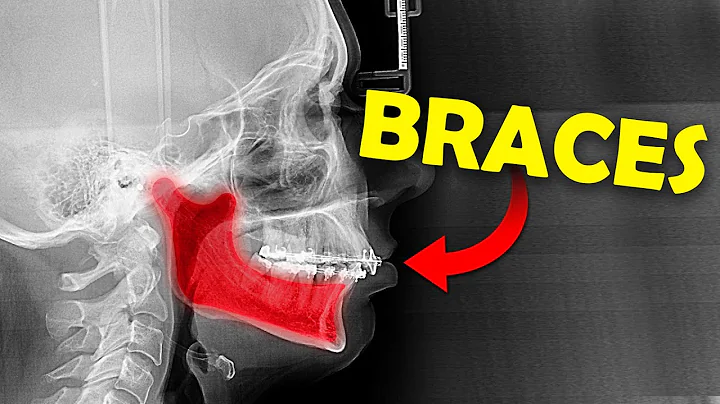Understanding Gas Furnace Error Codes: Troubleshooting and Solutions
Table of Contents
- Introduction
- Gas Furnace Error Codes
- Status Code Light
- Power Issues
- Troubleshooting
- Gas Furnace Sequence of Operation
- Testing Voltage and Current
- Gas Valve and Flame Ignition
- Flame Rollout Switches and Thermal Limits
- Abnormal Flame Proving Signal
- Ignition Lockout
- Low Voltage Fuse Issues
- Pressure Switch Problems
- Component Testing
- Conclusion
Gas Furnace Error Codes: Troubleshooting Common Issues
Gas furnaces are a popular choice for home heating due to their efficiency and reliability. However, like any mechanical system, they can sometimes encounter issues. One way to identify and address these problems is through error codes. This article will guide you through the error codes commonly found in gas furnaces and provide troubleshooting steps to help resolve the issues.
Status Code Light
The status code light on a gas furnace provides vital information about its operation. Understanding the meaning of each code can help diagnose the problem. Here are some common status codes and their explanations:
- Code 11: No errors detected in the last 72 hours.
- Code 12: Blower turns on after power up, cooling down the heat exchanger.
- Code 13: Limit circuit lockout. The furnace will not operate for a specified period to allow the flame roll-out switches or thermal limit switch to reset.
- Code 14: Ignition lockout. The furnace has attempted to ignite the gas three times without success.
Power Issues
Power problems are often the root cause of gas furnace errors. If the status code light is off, there may be no power reaching the furnace. Start troubleshooting by checking the following:
- Ensure the power switch is on and the circuit breaker is not tripped.
- Measure the voltage at various points, including the transformer and gas valve, to ensure proper power supply.
- Verify the 24-volt signal between the thermostat's W terminal and common terminal to ensure a call for heat.
Troubleshooting
While error codes provide useful information, they generally point you in the direction of a potential problem rather than identifying the exact issue. Troubleshooting involves a systematic approach to diagnose and resolve the problem. Here are steps to take when troubleshooting gas furnace errors:
- Check power supply and ensure all components are receiving voltage.
- Inspect the flame roll-out switches and thermal limits for any tripped switches.
- Clean or replace the flame rod and hot surface igniter if necessary.
- Verify the gas valve is operational and correctly adjusted for proper gas flow.
- Test the pressure switches for proper operation, including checking for blockages or faulty connections.
It is important to note that some issues may require the expertise of a qualified HVAC technician. If you are uncomfortable performing troubleshooting steps or uncertain about a specific problem, it is best to seek professional help.
Gas Furnace Sequence of Operation
Understanding the sequence of operation in a gas furnace can help diagnose issues more effectively. The typical sequence involves the following steps:
- The inducer motor turns on to create a draft and pull combustion gases through the heat exchanger.
- The pressure switches verify proper airflow, allowing the ignition process to proceed.
- The hot surface igniter heats up to ignite the gas and create a flame.
- The gas valve opens to allow the gas to flow and sustain the flame.
- The flame rollout switches and thermal limits monitor the temperature in the heat exchanger for safety.
- Once the heat exchanger reaches the desired temperature, the blower motor turns on to distribute warm air throughout the home.
Testing Voltage and Current
Testing voltage and current levels in a gas furnace is crucial to identify power supply issues. Use a multimeter to measure the voltage at various points in the system, such as the transformer, gas valve, and door switch. This ensures that the correct voltage is reaching each component and helps pinpoint potential problems with power supply.
Testing current, especially in the flame rectification process, can reveal issues with the flame rod's conductivity. A low microamp reading may indicate a faulty flame rod or poor flame quality. It is essential to have a good signal of 2 to 10 microamps to ensure proper flame rectification.
Gas Valve and Flame Ignition
A gas furnace's gas valve and flame ignition components play a vital role in its operation. If the gas valve malfunctions or fails to open, the furnace will not operate. Problems with flame ignition can also prevent the furnace from lighting. Testing the gas valve for proper operation and checking the flame ignition process can help identify and resolve these issues.
Flame Rollout Switches and Thermal Limits
Flame rollout switches and thermal limits are crucial safety devices in a gas furnace. They protect against excessive temperatures and flame irregularities that could potentially cause hazards. It is essential to understand how these switches work and inspect them regularly for any signs of damage or malfunctioning.
Abnormal Flame Proving Signal
An abnormal flame proving signal occurs when the furnace detects a flame when there should not be one. This could be due to a faulty flame rod, a cracked heat exchanger, or other issues. Proper testing and inspection can help determine the cause and resolve the problem.
Ignition Lockout
Ignition lockout occurs when the furnace fails to ignite the gas after multiple attempts. This could be due to various issues such as improper gas flow, malfunctioning components, or a blocked heat exchanger. Understanding the ignition process and troubleshooting the components involved can help resolve this issue.
Low Voltage Fuse Issues
A blown low voltage fuse indicates a short circuit in the furnace's wiring. This can be caused by a wire shorted against the common or ground, a faulty component, or other electrical issues. Diagnosing the source of the short circuit and resolving it is essential to prevent further damage.
Pressure Switch Problems
Pressure switches are critical for ensuring proper airflow in the furnace. Errors related to pressure switches (codes 31 and 32) often indicate a lack of airflow or a malfunctioning switch. Troubleshooting these issues involves inspecting the tubing, checking for blockages, or replacing faulty switches.
Component Testing
Performing a component test can help verify the proper functioning of essential furnace components, including the inducer motor, hot surface igniter, and blower motor. This test involves running each component for 15 seconds to ensure they are operating correctly. It can provide valuable information in diagnosing specific issues.
Conclusion
Gas furnace error codes serve as valuable diagnostic tools, providing information about potential problems. By understanding these codes and following appropriate troubleshooting steps, homeowners can often resolve minor issues themselves. However, for more complex problems or if unsure about a specific diagnosis, it is advisable to consult a professional HVAC technician. Regular maintenance and proper care will help ensure the efficient and reliable performance of your gas furnace for years to come.







